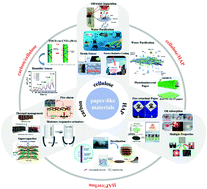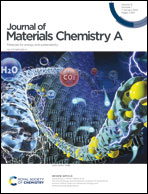The gorgeous transformation of paper: from cellulose paper to inorganic paper to 2D paper materials with multifunctional properties
Abstract
Cellulose paper derived from plants is used for daily writing and recording and has historically played an important role in promoting cultural dissemination and inheritance. However, it has attracted increasing attention in recent years, serving as a flexible platform or substrate for environment and energy applications, which is attributed to its many inherent advantages such as biocompatibility, biodegradability, sustainability, low cost, and great capability to be modified. With the development of various industries, especially the flexible electronics industry, the demand for two-dimensional (2D) paper-like materials have increased. Several types of inorganic paper are manufactured and have been widely used in many fields. Among them, hydroxyapatite (HAP)-based and carbon-based inorganic paper exhibit unique advantages and have been well applied in certain fields. In addition, there are many composite papers assembled by several raw materials (cellulose fibers, HAP, and carbon), exhibiting excellent characteristics. Cellulose paper is no longer limited to traditional writing applications and has great potential to be used in many aspects, achieving a stunning change in its role. The emergence of inorganic paper and hybrid paper has further demonstrated the application prospects of paper-like two-dimensional materials. Herein, initially, we present the characteristics of three types of paper and composite paper, and then summarize their typical applications in the environment and energy fields.

- This article is part of the themed collection: Journal of Materials Chemistry A Recent Review Articles


 Please wait while we load your content...
Please wait while we load your content...